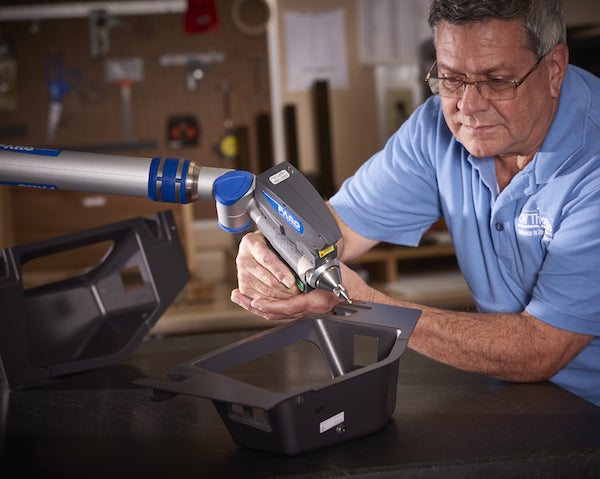The Future of Thermoformed Parts: Smart Materials and Advanced Manufacturing

The world of manufacturing is evolving at a rapid pace, and the field of plastic fabrication is no exception. Among the various plastic production techniques, thermoforming continues to hold a significant position due to its versatility, cost-effectiveness, and efficiency. But what lies ahead for thermoformed parts as new materials and technologies emerge? Let’s explore how smart materials and advanced manufacturing processes are shaping the future of thermoformed components and why this evolution matters for industries worldwide.
What Are Thermoformed Parts?
Before diving into the future, it’s helpful to revisit what thermoformed parts are. Thermoforming is a manufacturing process where a plastic sheet is heated until pliable, then formed over a mold to create a specific shape. Once cooled, the material retains the shape, resulting in everything from packaging trays to automotive panels.
Thermoformed parts are favored for their quick turnaround, design flexibility, and cost advantages over more complex molding processes. As industries seek smarter, more sustainable, and high-performance solutions, thermoforming is poised to innovate in exciting ways.
Smart Materials: Adding Intelligence to Thermoformed Parts
One of the most promising advancements for thermoformed parts is the integration of smart materials—plastics that can respond to environmental stimuli or have enhanced functionalities.
1. Shape Memory Polymers
Shape memory polymers (SMPs) can “remember” their original shape and return to it when triggered by heat, light, or electricity. Imagine thermoformed parts that can self-correct warping or adjust their shape on demand without manual intervention. This capability opens doors for applications in aerospace, medical devices, and consumer products where adaptability is crucial.
2. Conductive Plastics
Thermoformed parts with embedded conductive materials can turn static components into interactive, electronic-enabled products. This can lead to innovations like touch-sensitive surfaces, embedded sensors, or even flexible circuit boards molded seamlessly into plastic parts. Such advancements are game-changers for wearable tech, smart packaging, and automotive dashboards.
3. Self-Healing Materials
Materials that repair themselves after damage are no longer just science fiction. Self-healing polymers integrated into thermoformed parts can extend product life, reduce maintenance costs, and improve safety. For industries where durability matters—like construction, electronics, or transportation—these materials represent a significant leap forward.
Advanced Manufacturing: Transforming Thermoforming Techniques
Beyond materials, manufacturing technology itself is pushing thermoforming to new heights. The fusion of digital tools and automated processes is enabling greater precision, customization, and efficiency.
1. Automation and Robotics
The incorporation of robotics in thermoforming lines increases speed and consistency, reducing human error. Automated trimming, stacking, and quality inspection systems enhance throughput and product quality, making thermoformed parts more competitive for high-volume production.
2. 3D Printing for Tooling
Traditionally, creating molds for thermoforming has been time-consuming and costly. Now, with advances in 3D printing, custom molds can be produced faster and at a fraction of the cost. This innovation lowers barriers for product development and allows rapid iteration, helping businesses bring products to market quicker.
3. Digital Twin and Simulation
Using digital twins—virtual replicas of manufacturing processes—companies can simulate thermoforming conditions before production. This enables optimization of mold design, material choice, and process parameters, reducing waste and defects. The result? Higher quality thermoformed parts with less trial and error.
Sustainability: The Green Future of Thermoformed Parts
Sustainability is a driving force behind many modern manufacturing innovations. Thermoforming aligns well with this trend, especially as new materials and processes are developed to minimize environmental impact.
-
Recyclable Thermoformed Parts: Advances in material science are producing thermoforming plastics that are easier to recycle without compromising performance.
-
Biodegradable Materials: Research is ongoing into biodegradable polymers suitable for thermoforming, which could revolutionize packaging industries by reducing plastic waste.
-
Energy-Efficient Manufacturing: Automated, optimized thermoforming lines reduce energy consumption and material waste, contributing to greener production.
These sustainable innovations not only address environmental concerns but also appeal to consumers and businesses prioritizing eco-friendly products.
Industries Benefiting from the Future of Thermoformed Parts
The future of thermoformed parts is promising for a variety of sectors:
-
Automotive: Lightweight, durable thermoformed parts improve fuel efficiency and enable integration of smart features like sensors and electronics.
-
Medical: Customizable, smart thermoformed components are used in devices, protective packaging, and ergonomic equipment, enhancing patient care and safety.
-
Consumer Goods: From innovative packaging to smart home devices, thermoformed parts are becoming more interactive and sustainable.
-
Aerospace: The demand for lightweight, adaptable materials drives the adoption of advanced thermoformed parts that can withstand extreme conditions.
Conclusion: Embracing Innovation with Thermoformed Parts
As we look ahead, the combination of smart materials and advanced manufacturing technologies will redefine what’s possible with thermoformed parts. These innovations offer companies the ability to create products that are not only more functional and durable but also smarter and more sustainable.
For businesses ready to embrace this future, partnering with a knowledgeable thermoforming expert is essential. Whether you’re developing a prototype or scaling production, understanding how to leverage these emerging trends will keep your product competitive and relevant.
At CW Thomas, we are proud to be at the forefront of thermoforming innovation. Our commitment to quality, advanced manufacturing, and customer collaboration ensures that your thermoformed parts meet the demands of today and the possibilities of tomorrow.




